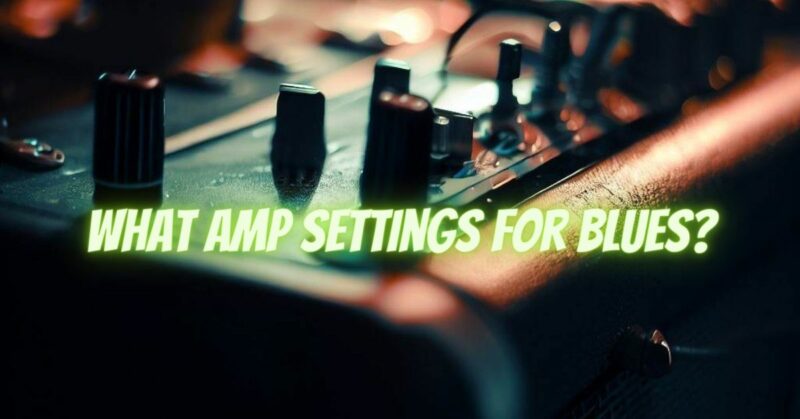Blues music is a genre rich in emotion, expression, and soulful guitar playing. To capture the essence of blues and achieve that signature tone, it’s important to dial in the right amp settings. In this article, we will explore some fundamental amp settings that can help you achieve an authentic and expressive blues sound, allowing you to channel your inner blues guitarist and create music that resonates with the heart and soul.
- Clean Channel:
Start by setting your amplifier to a clean or slightly overdriven channel. Blues tones often rely on a foundation of clean, warm, and balanced sounds. Adjust the volume and gain controls to achieve a clean tone that retains clarity and dynamics. This clean canvas will serve as a platform for your bluesy playing and allow your guitar’s tone and dynamics to shine through.
- Tone Controls:
Experiment with the tone controls on your amplifier to shape your sound. The following guidelines can provide a starting point, but feel free to adjust to your preference:
- Treble: Set the treble control to a moderate level to achieve a balanced tone. Increasing it slightly can add brightness and clarity, while reducing it can result in a smoother, warmer sound.
- Midrange: Boosting the midrange can provide punch, presence, and a vocal-like quality to your sound. Experiment with different levels to find the sweet spot that suits your playing style and guitar.
- Bass: Adjust the bass control to add depth and warmth. A moderate setting is usually sufficient for blues tones, but feel free to adjust to your taste.
- Reverb:
Reverb is a crucial component in creating a spacious and atmospheric sound in blues music. Adding a touch of reverb can emulate the ambience of a room or a vintage recording environment. Set the reverb control to a subtle level, just enough to provide a sense of space and depth without overpowering the tone. Experiment with different reverb types to find the one that complements your playing style and enhances the bluesy vibe.
- Dynamics and Touch Sensitivity:
Blues guitar playing is all about dynamics and touch sensitivity. Pay attention to your playing technique, varying the intensity of your picking and the pressure of your fingers on the strings. Experiment with your guitar’s volume control, rolling it back slightly for cleaner tones and pushing it forward for more bite and sustain. By mastering these subtle nuances, you can bring your blues playing to life and create expressive and dynamic performances.
- Overdrive and Boost:
For those moments when you want to add some grit and bite to your blues sound, consider using overdrive or boost pedals. These can provide a natural and responsive overdriven tone that complements the dynamics of your playing. Set the gain and level controls on the pedal to achieve the desired amount of breakup and sustain, while still maintaining the essence of the blues.
Conclusion:
Achieving a captivating blues tone on your guitar amplifier requires attention to detail and a focus on the core elements of the genre. By setting your amp to a clean or slightly overdriven channel, adjusting the tone controls to achieve a balanced sound, incorporating a touch of reverb for ambiance, emphasizing dynamics and touch sensitivity, and utilizing overdrive or boost pedals when needed, you can unlock the soulful and expressive potential of your blues playing. Remember, these settings provide a starting point, but don’t be afraid to experiment and personalize your sound to reflect your unique style and musicality. Let the blues guide your fingers and your amplifier be the vessel for your heartfelt expression.


